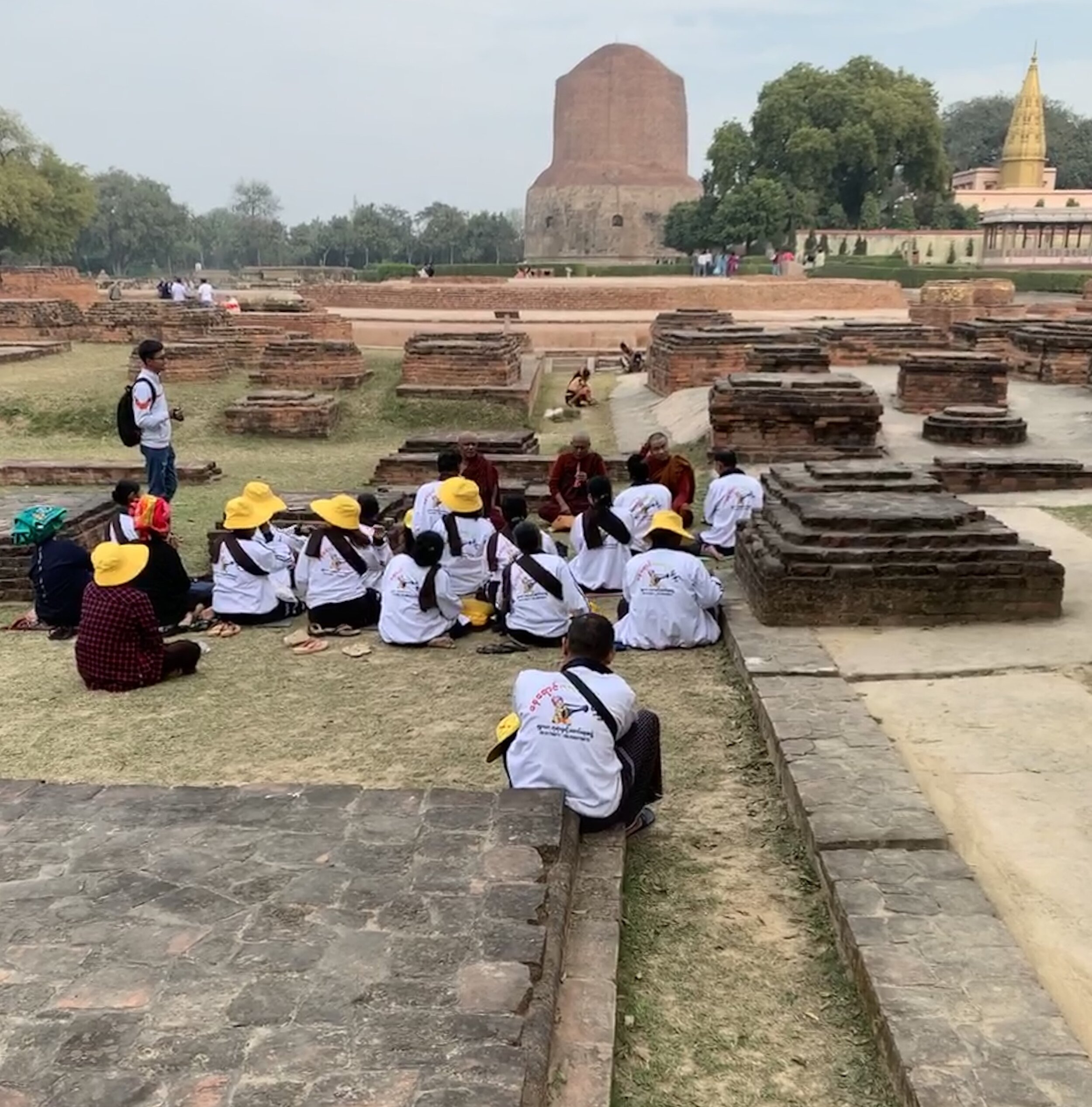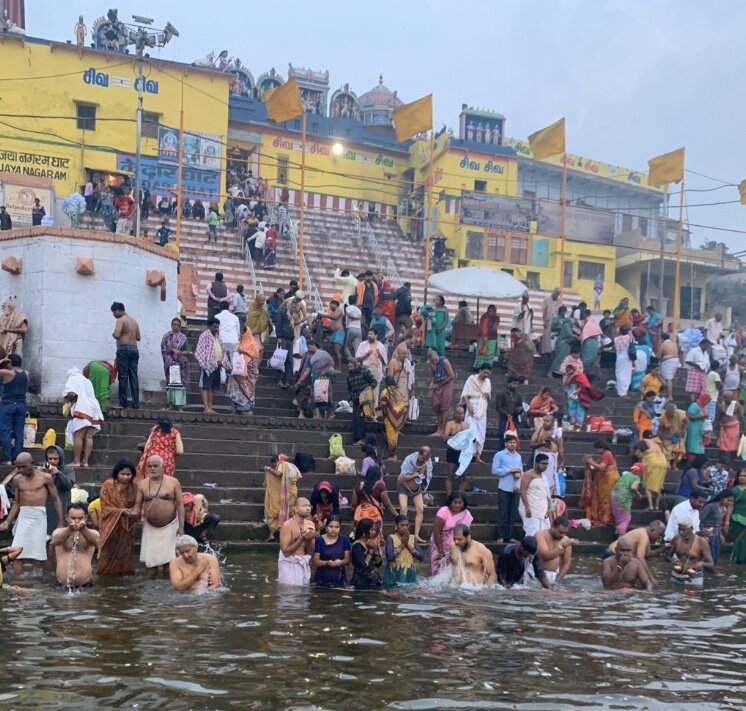Varanasi, older than old
The Aarti Ceremony from a boat in the Ganges
During his tour of the British Empire in 1896, Mark Twain visited Varanasi. He was stunned. In his final travelogue, Following the Equator, Mark Twain wrote that city “is older than history, older than tradition, older even than legend and looks twice as old as all of them put together.”
One and a quarter centuries later, I came to Varanasi. It has hardly changed at all since Twain was here. Change is not what Varanasi is about. It is all about enlightenment. It is for soul-searching and self-finding. Varanasi is considered the oldest living city in the world. It is as if a prehistoric creature were found still living in our modern world. There is nothing at all modern about Varanasi.
Every Hindu wants to come to Varanasi at least once in his life, to soak himself in the holy water of the Ganges, the mother who gives life and then takes in her dead. The flow of pilgrims to the city is as constant as the flow of the river itself. Year after year, at least forty or fifty thousand pilgrims a day make their way here; some days, many times that number.
The ghats, or banks of steps, that connect the city to its river teem with life at all hours of every day. Scores of monks can be found praying or chanting. Above the ghats are many Hindu temples, some grand, others tiny and humble. All along the ghats you will see men and women meditating. And many, many going to the bottom of the steps to dip themselves in the holy water of the Ganges. While we were there it was quite chilly, yet the expressions we saw on the faces of these pilgrims were only of joy.
A morning cremation along the Ganges
Several ghats serve as the site of the Hindu death ritual, where loved ones bring their dead, wrap them in shrouds and place them on pyres of wood and burn them so that their ashes can be contributed to the Ganges. There is also the commerce of death, the selling of shrouds and firewood. The closest male relative of the deceased is to be shaved clean by a Hindu barber on the day of cremation and watch over the process. Scavengers rake through the ashes of the burned bodies searching for rings and other items that have been left on the corpses. These rituals, of life and of death, have been followed on these ghats for centuries. It is simply an extraordinary and overwhelming sight for visitors like us.
Every night at dusk, an elaborate ceremony takes place on the Dasaswamedh ghat. This is known as the Ganga Aarti. Seven priests, perched on platforms, plus five others on an adjacent ghat, perform the highly choreographed ritual blessings, which include the blowing of conch shells, burning of incense, beating of drums, waving of peacock fans and fire. Each night up to 20,000 people gather to watch and/or participate. Since the priests’ platforms are just along the river’s edge, this requires the spectators to go onto the river to be able to see. Thus every night, a huge flotilla of wooden boats rafts together in front of the ghats to form a water-bound audience for the spectacular show. This, too, has been going on for centuries.
Buddhist pilgrims from Thailand being greeted by monks at a stupa in Sarnath
Not only is Varanasi the holiest city for Hindus, it is also the birthplace of Buddhism. A few miles just outside the main part of Varanasi lies Sarnath, where in the fifth century BC the young prince Siddhartha preached to his disciples following his renunciation of the kingdom he was born to inherit. Siddhartha became enlightened, reached his nirvana and became the Buddha, the “Awakened One.” He taught his followers to pursue a “middle way,” striking a balance between indulgence and self-deprivation. Today more than a half billion people call themselves Buddhists. For them, Sarnath in Varanasi is one of their most holy sites, and Buddhist pilgrims from around the world make their way here alongside the throngs of Hindus to what is considered the world’s holiest city.
Hindu pilgrims bathing themselves in the holy Ganges
We consider ourselves lucky to have experienced Varanasi and the Ganga Aarti. Beyond that, it happened that we were visiting during the annual celebration of the wedding of the Hindu god Shiva, the Destroyer. Shiva’s devotees are a loud, boisterous lot. Our trip to and from the Aarti on the eve of the holiday was a unique experience. We walked with the masses, shoulder to shoulder and sometimes bum to bum, all the while dodging motorcycles, traditional pedaled rickshaws and tuk-tuks, the three-wheeled motorized rickshaws that are everywhere. We, too, hopped in tuk-tuks for part of our nearly four-mile journey, even then having to avoid being scraped by passing cycles. It was as if we were caught in a swift whitewater current—no chance of stopping or slowing down, just constantly trying to avoid disaster. It was a memorable evening in all respects, adding flavor to our altogether unforgettable visit to the holy city of Varanasi.




